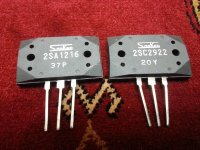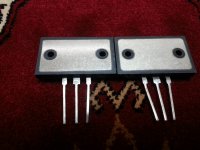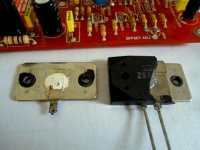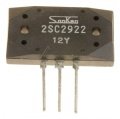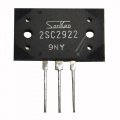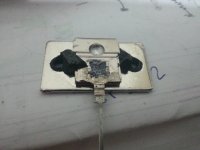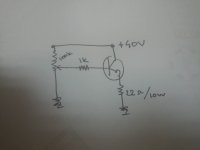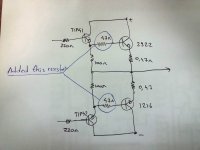I was checking in a supplier (ASWO) in germany, and they what apears to be the original as a Pioneer P/N for about 50 Euros each !!!!! and they have maybe a fake one for 5 Euros each. In the left photo is the one i think is original and in the right the 5 Euros fake.
Attachments
I was checking in a supplier (ASWO) in germany, and they what apears to be the original as a Pioneer P/N for about 50 Euros each !!!!! and they have maybe a fake one for 5 Euros each. In the left photo is the one i think is original and in the right the 5 Euros fake.
The Sanken pair is discontinued to my knowledge for several years.
No it isn't,look http://www.semicon.sanken-ele.co.jp/ctrl/en/product/list/Audio/The Sanken pair is discontinued to my knowledge for several years.
They are not on the discontinued list by SANKEN : Discontinued Products ?Sanken Electric
They are not on the discontinued list by SANKEN : Discontinued Products ?Sanken Electric
Digikey has 447 pairs , fresh from japan - in stock .
Newark can have 250 pairs shipped right to your door for
$2417 USD.
Absolutely not discontinued !
OS
ok my freinds yesterday i connected one pair to my amplifier output.when i increase volume sound goes bad (bass).then i connected 2sc5200/1943 was ok.I thought it is fake and cracked looks genuine.I bought them very cheap these sanken transistors.(0.56$ each)what can be problem.Thank you
Attachments
Cheapness easily overcomes common sense when we consider any purchase, I think....I bought them very cheap these sanken transistors.(0.56$ each)what can be problem....
Common sense should tell you that you cannot be buying genuine, new Japanese product since Sanken could not market their components at below their cost price, thus making losses and damaging their own reputation. That would be stupid.
'Sorry to say that at US$ 0.56 ea, you have been conned by either fake or damaged stock. Looking at components for obvious clues as to whether they are genuine or not is only that - just looking at clues that only show that the fake producer was stupid or careless. Clever fake producers will be able to make components that pass all appearance tests. However, load testing to the limits of the specification, which is usually too difficult and expensive for amateurs to attempt, is the only real proof of the chip and allows an expert to declare it is genuine product or not.
If you wish to use highest quality, expensive parts like these, protect your investment by buying from genuine, authorized sellers. Otherwise, you will continue to buy mostly junk and simply waste your time and money.
The funny thing is the internal construction of these and the die size look right. There may of course still be something wrong with them - perhaps "real" ones which failed spec. Every fake (and second source like ISC) MT200's that I've seen do not have the internal TO-264 heat spreader.
Yeah thats right.I doubt also when i saw the price and wanted give a chance for this.good thing is i bougt only 2pairs.i believed to appearance which was my mistake.2sc5200 is 2$ each they work fine
Ok how can i test power of the transistor.(in simple way)
will this proof anything?if i connect like this and measure Vce and Vr.I dont have osciloscope.have two nultimeters.Thank you guys.
Ok how can i test power of the transistor.(in simple way)
will this proof anything?if i connect like this and measure Vce and Vr.I dont have osciloscope.have two nultimeters.Thank you guys.
Attachments
Hi my freinds.Yesterday i did something.Look at photo i added 47ohm resistors to base of output transitors.And problem solved.Now sound doesnt go bad untill end of the volume.(2sc2922/1216 working fine only it is dissipating more power than 5200/1943).Can someone explain why this is fixed when i added 47ohm resistor.I will be very happy.
Attachments
That "base stopper" resistor you added is widely used to quench oscillation which it seems was your real problem, resulting I assume, from the higher FT of the Sanken pair.Can someone explain why this is fixed when i added 47ohm resistor.I will be very happy.
Normal resistor values used are only in the 2-10 ohms range but at least you have success and found this solution on your own. Good work.
Also, your drivers are too slow. Having outputs which are much faster than the drivers is also a recipe for oscillation. TIP41/2 work fine driving the old school TO-3's, but not so good for 30 MHz outputs. It's even iffy with the C5200's. Get something a little faster (1503x, etc) and you'll definitely be able to reduce the base stopper values - on both the outputs and the drivers.
- Status
- This old topic is closed. If you want to reopen this topic, contact a moderator using the "Report Post" button.
- Home
- Amplifiers
- Solid State
- 2sc2922/2sa1216 help me to find out fake or not
